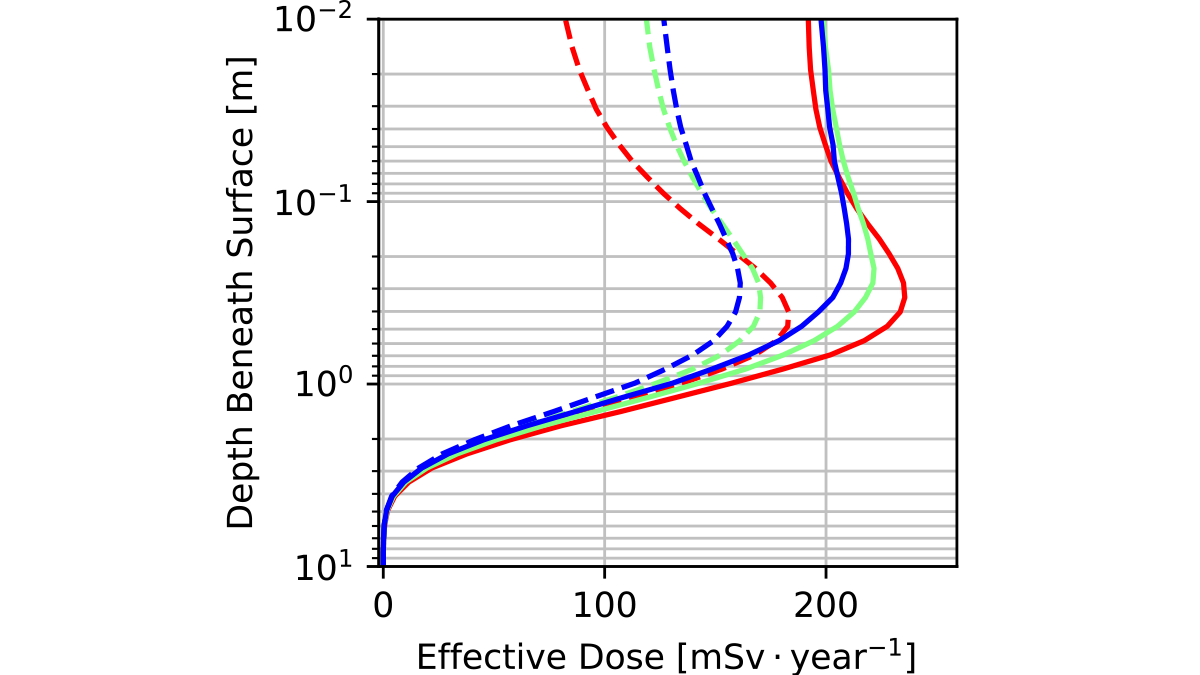Editors’ Highlights are summaries of recent papers by AGU’s journal editors.
Source: Journal of Geophysical Research: Planets
Exploration of the solar system is a fundamental goal of humanity; however, space is often a harsh and unforgiving environment. In particular, human exploration of the surface of Mars is an increasing focus of conversation, yet Mars’s lack of a global magnetic field or thick atmosphere means that biologically damaging galactic cosmic rays (GCRs) continually bathe the surface of Mars.
In their recent study, Zhang et al. [2022] used state-of-the-art computing techniques to track the interactions of primary GCRs and secondary neutron radiation with the Martian atmosphere and surface regolith. The authors explore variations in radiation dose as a function of the local surface pressure of the Martian atmosphere, which can vary by over an order-of-magnitude between Mars’s highest peaks and its deepest basins. Changes in atmospheric pressure thereby provide variable shielding from primary GCRs.
The study finds that the effective radiation dose peaks not at the surface of Mars, but rather at depths of about 30 centimeters below the surface due primarily to the flux of secondary emitted neutrons. Furthermore, taking into account typical limits on radiation exposure dose for humans, the authors find that the required regolith depth for safe habitation on Mars is between 1 to 2 meters. Such modeling has important implications for the designs of potential human habitats on the surface of Mars.
Citation: Zhang, J., Guo, J., Dobynde, M. I., Wang, Y., & Wimmer-Schweingruber, R. F. (2022). From the top of Martian Olympus to deep craters and beneath: Mars radiation environment under different atmospheric and regolith depths. Journal of Geophysical Research: Planets, 127, e2021JE007157. https://doi.org/10.1029/2021JE007157
—Andrew Poppe, Associate Editor, Journal of Geophysical Research: Planets

